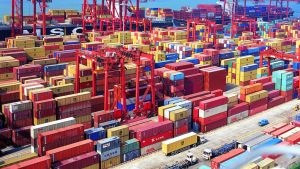When you’re selecting a container shipping company in Singapore, you’ll need to navigate through multiple factors that can impact your business’s supply chain efficiency. From established industry giants to emerging digital-first carriers, the market offers diverse options that require careful evaluation. You’ll want to contemplate not just pricing and routes, but also reliability metrics, technological capabilities, and service integration. Let’s examine the key criteria that’ll help you make an informed decision for your logistics needs.
Track Record and Industry Reputation Assessment
When evaluating Singapore’s container shipping companies, assessing their track record and industry reputation serves as a critical first step in the selection process. You’ll need to analyze their years in operation, on-time delivery rates, and customer satisfaction scores. Check their industry certifications, safety records, and regulatory compliance history. Review independent ratings from maritime associations and examine their financial stability indicators.

Service Network Coverage and Route Flexibility
How extensively a shipping company’s network reaches across global ports directly impacts your supply chain efficiency. You’ll need to analyze their port coverage in key markets, frequency of sailings, and alternative route options. Evaluate their direct services versus transshipment routes, transit times between major hubs, and their ability to provide viable backup solutions during disruptions or peak seasons.
Technology Integration and Digital Capabilities
Modern shipping operations depend heavily on digital infrastructure, making a carrier’s technological capabilities a crucial evaluation factor. You’ll need to assess their track and trace systems, EDI capabilities, API integrations, and real-time visibility platforms. Check if they offer automated booking tools, digital documentation, and mobile apps. Evaluate their cybersecurity measures and blockchain implementation for enhanced data security.
Cost Structure and Value-Added Services
Understanding a carrier’s cost structure and value-added services helps determine the true value proposition beyond basic freight rates. You’ll need to analyze their pricing models, including base rates, surcharges, and volume discounts. Evaluate complementary offerings like customs clearance, warehousing, and last-mile delivery. Compare their total landed cost calculations and service bundles to identify the most cost-effective solution for your needs.
